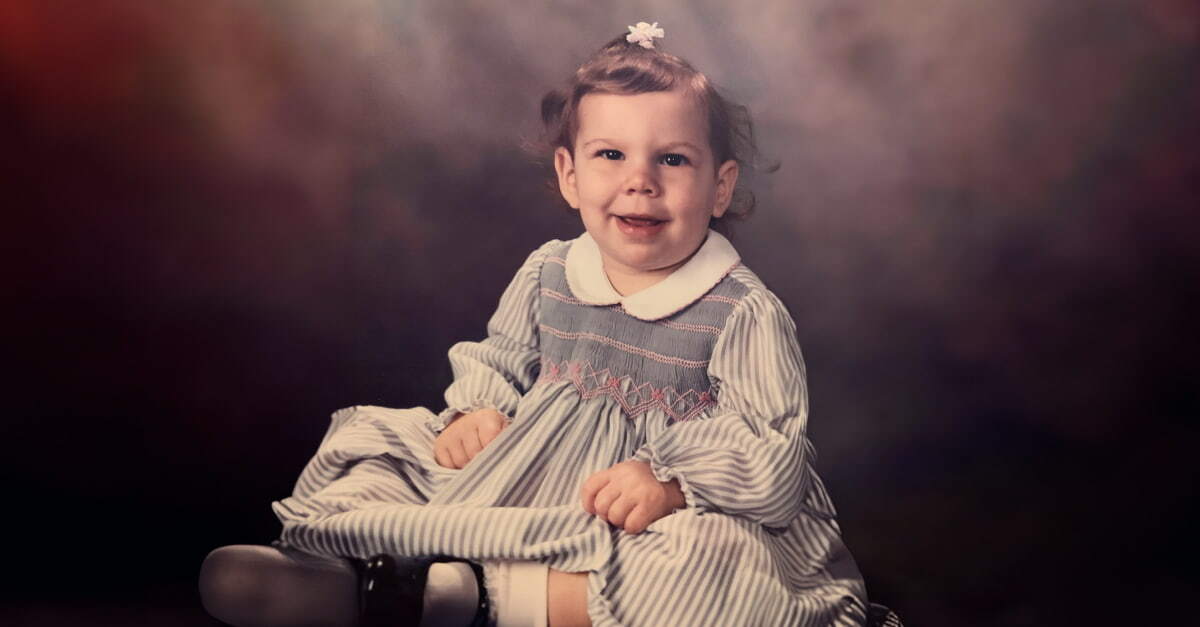Amie’s Story: Adoption and Cerebral Palsy

My name is Amie, and I am one of the 1 million Americans living with cerebral palsy, a neurological disability that affects mobility and other skills. I also happen to be one of the 5 million Americans who are adoptees.
I would like to share my story with you and how my adoptive parents did everything they could to provide the tools I needed to achieve my dreams, no matter my abilities.
How It Started
In May of 1989, a young woman walked into an attorney’s office, having already made the difficult decision to provide a better home for the child she was expecting by making an adoption plan.
The adoption attorney knew where to place the child the moment this woman walked into his office. He knew whatever challenges came up, this family would love her no matter what. The baby in this story was me. It was in this nurturing environment that I began my life.
Shortly after my adoption was finalized, while I was still an infant, my parents began to notice that something seemed off in my development stages. Unfortunately, because of the nature of the adoption, they had no way to contact my birth mother for vital medical information.
My developmental issues consisted of crawling late, talking late, and having trouble swallowing, to name a few. After neurological appointments with many pediatricians and different testing, doctors determined that I had cerebral palsy.
Facing My Diagnosis Head On
Instead of being shocked or devastated, my mom said, “Thank God,” to my doctors because she knew that my diagnosis could have been more severe. Cerebral palsy is a static disorder rather than progressive, meaning my symptoms wouldn’t get worse as I grew older.
After my diagnosis, my parents decided they would do everything in their power to provide me with the tools I needed. They put me in multiple therapies for cerebral palsy, including speech therapy, occupational therapy, and physical therapy, to help me catch up to development milestones.
My speech therapist taught me American Sign Language, finally allowing me to communicate. Once my parents saw my use of sign language and my progress in physical therapy, they knew that cerebral palsy wasn’t going to define me.
By the time I was 2 years old, the tools they had provided helped me progress so far that my parents asked special permission from the county to put me in soccer. This early introduction to the sport ignited my passion for soccer and grew my confidence so I could achieve my dreams, despite my cerebral palsy.
Resources to Help People With Cerebral Palsy
During my childhood, there was limited internet, resources, or information for families about cerebral palsy. At the time, it was considered an “umbrella” term with little understanding of the specifics.
Despite this, my parents wouldn’t let “can’t” be in my vocabulary. Throughout every stage of my life, they gave me the tools and encouragement I needed not to let my disability define my ability.
The confidence my adoptive parents instilled in me laid the foundation for so many achievements in my life, including connecting with my birth mother and her family. I thanked her for making the hard decision in order to give me the best life possible, which led me to my parents.
The resources that are available now would have been so helpful to my adoptive family. It is my passion to bring this support to anyone who needs it, especially those who might have adoption stories like mine.
This is why I believe the work we do at Cerebral Palsy Guide is so important. If your child has been diagnosed with cerebral palsy, call us at (855) 220-1101 now to see how we can help.

